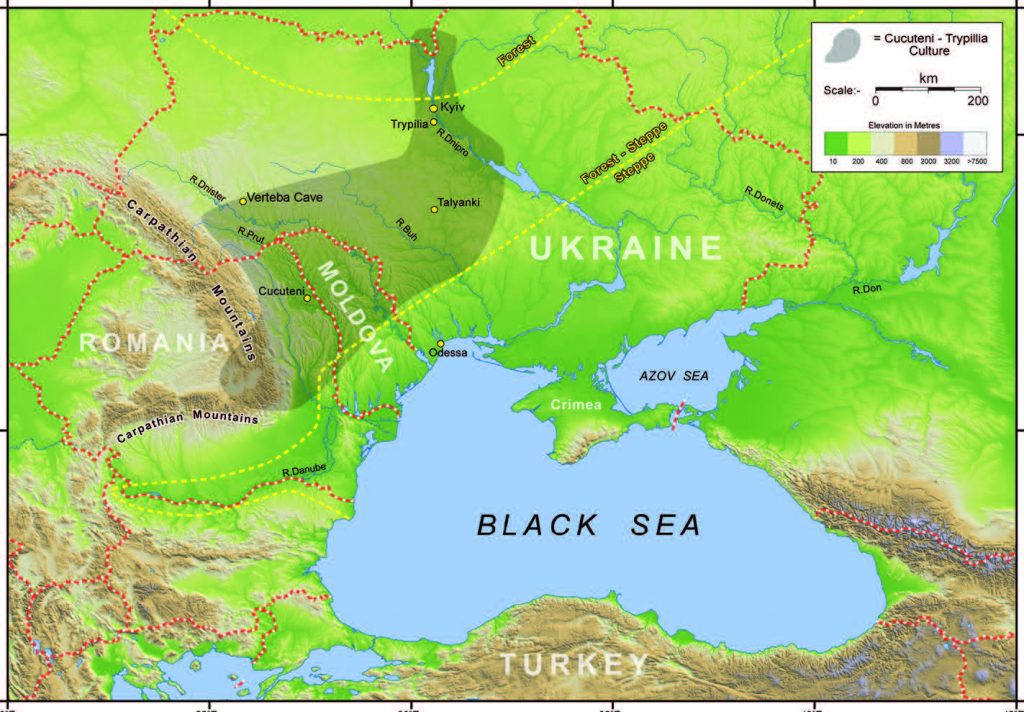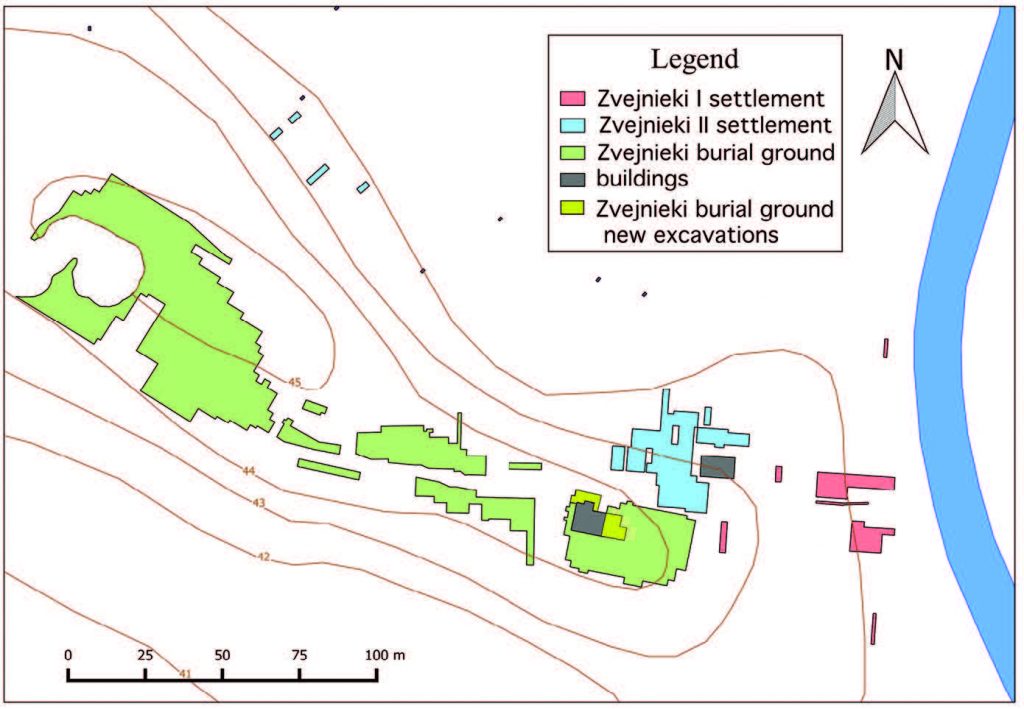The latest publication of Documenta Praehistorica, vol. 44 (2017) is a delight for anyone interested in Indo-European and Uralic studies, whether from a linguistic, archaeological, anthropological, or genetic point of view. Articles are freely downloadable from the website.
The following is a selection of articles I deem more interesting, but almost all are.
On the Corded Ware culture
Do 14C dates always turn into an absolute chronology? The case of the Middle Neolithic in western Lesser Poland, by Marek Novak:
In the late 5th, 4th, and early 3rd millennia BC, different archaeological units are visible in western Lesser Poland. According to traditional views, local branches of the late Lengyel-Polgár complex, the Funnel Beaker culture, and the Baden phenomena overlap chronologically in great measure. The results of investigations done with new radiocarbon dating show that in some cases a discrete mode and linearity of cultural transformation is recommended. The study demonstrates that extreme approaches in which we either approve only those dates which fit with our concepts or accept with no reservation all dates as such are incorrect.

This article brings new data against David Anthony’s new IECWT model, suggesting later dates for the Corded Ware Culture group of Lesser Poland, and thus an earlier origin of their nomadic herders in the steppe, forest-steppe or forest zone to the east and south-east.
On the Pontic-Caspian steppe and forest-steppe
First isotope analysis and new radiocarbon dating of Trypillia (Tripolye) farmers from Verteba Cave, Bilche Zolote, Ukraine, by Lillie et al.:
This paper presents an analysis of human and animal remains from Verteba cave, near Bilche Zolote, western Ukraine. This study was prompted by a paucity of direct dates on this material and the need to contextualise these remains in relation both to the transition from hunting and gathering to farming in Ukraine, and their specific place within the Cucuteni-Trypillia culture sequence. The new absolute dating places the remains studied here in Trypillia stages BII/CI at c. 3900–3500 cal BC, with one individual now redated to the Early Scythian period. As such, these finds are even more exceptional than previously assumed, being some of the earliest discovered for this culture. The isotope analyses indicate that these individuals are local to the region, with the dietary stable isotopes indicating a C3 terrestrial diet for the Trypillia-period humans analysed. The Scythian period individual has δ13C ratios indicative of either c. 50% marine, or alternatively C4 plant inputs into the diet, despite δ18O and 87Sr/86Sr ratios that are comparable to the other individuals studied.

neighbouring countries, key sites and the location of Verteba Cave ©WAERC
University of Hull.
New data on one of the cultures that was very likely a close neighbour of Corded Ware peoples.
Chronology of Neolithic sites in the forest-steppe area of the Don River, by Smolyaninov, Skorobogatov, and Surkov:
The first ceramic complexes appeared in the forest-steppe and forest zones of Eastern Europe at the end of the 7th–5th millennium BC. They existed until the first half of the 5th millennium BC in the Don River basin. All these first ceramic traditions had common features and also local particularities. Regional cultures, distinguished nowadays on the basis of these local particularities, include the Karamyshevskaya and Middle Don cultures, as well pottery of a new type found at sites on the Middle Don River (Cherkasskaya 3 and Cherkasskaya 5 sites).
Radiocarbon chronology of Neolithic in the Lower Don and North-eastern Azov Sea, by Tsybryi et al.:
So far, four different cultural-chronological groups of sites have been identified in the North-eastern Azov Sea and Lower Don River areas, including sites of the Rakushechny Yar culture, Matveev Kurgan culture, Donets culture, and sites of the Caspian-Ciscaucasian region. An analysis of all known dates, as well as the contexts and stratigraphies of the sites, allowed us to form a new perspective of the chronology of southern Russia, to revise the chronology of this region, and change the concept of unreliability of dates for this area.
On the Forest Zone
The past in the past in the mortuary practice of hunter-gatherers: an example from a settlement and cemetery site in northern Latvia, by Lars Olof Georg Larsson:
During excavations of burials at Zvejnieki in northern Latvia, it transpired that the grave fill included occupation material brought to the grave. It contained tools of a type that could not be contemporaneous with the grave. This is confirmed by the dating of bone tools and other bone finds in the fill. The fill was taken from an older settlement site a short distance away. The fill also included skeletal parts of humans whose graves had been destroyed with the digging of the grave for a double burial. This provides an interesting view of the mortuary practice of hunter-gatherers and an insight into the use of the past in the past.

the farmhouse on the site and the gravel pit.
I keep expecting that more information is given regarding the important sample labelled “Late Neolithic/Corded Ware Culture” from Zvejnieki ca. 2880 BC. It seems too early for the Corded Ware culture in the region, clusters too close to steppe samples, and the information on it from genetic papers is so scarce… My ad hoc explanation of these data – as a product of recent exogamy from Eastern Yamna -, while possibly enough to explain one sample, is not satisfying without further data, so we need to have more samples from the region to have a clearer picture of what happened there and when. Another possibility is a new classification of the sample, compatible with later migration events (a later date of the sample would explain a lot). Anyway, this article won’t reveal anything about this matter, but is interesting for other, earlier samples from the cemetery.
Other articles on the Forest Zone include:
- Chronological timeframes of cultural changes in the Dnepr-Dvina region (7th to 3rd millennium BC), by Mazurkevich et al.
- The Early and Middle Neolithic in NW Russia: radiocarbon chronologies from the Sukhona and Onega regions, by Piezonka et al.
- Periodisation of the Neolithic and radiocarbon chronology of the Early Neolithic and the beginning of the Middle Neolithic in Finland, by Nordqvist and Mökkönen.
- Radiocarbon chronology of the Neolithic-Eneolithic period in the Karelian Republic (Russia), by Tarasov et al.
- Chronology of Kama Neolithic culture, by Lychagina and Vybornov.
- Сhronology of early Neolithic materials of the site Sakhtysh IIa (Central Russia), by Dolbunova et al.
Other articles include studies on Neolithic sites, potentially relevant for Indo-European migrations, such as Anatolia, Greece, southern or south-eastern sites in Europe. Check it out!
Related:
- The new “Indo-European Corded Ware Theory” of David Anthony
- The renewed ‘Kurgan model’ of Kristian Kristiansen and the Danish school: “The Indo-European Corded Ware Theory”
- Globular Amphora not linked to Pontic steppe migrants – more data against Kristiansen’s Kurgan model of Indo-European expansion
- mtDNA haplogroup frequency analysis from Verteba Cave supports a strong cultural frontier between farmers and hunter-gatherers in the North Pontic steppe
- New Ukraine Eneolithic sample from late Sredni Stog, near homeland of the Corded Ware culture